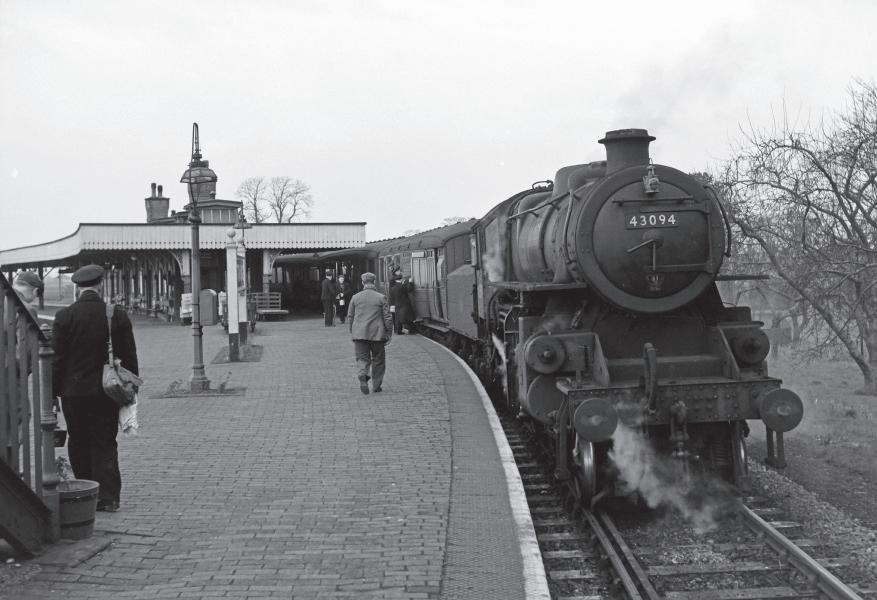

Around the Midland & Great Northern Joint Railway
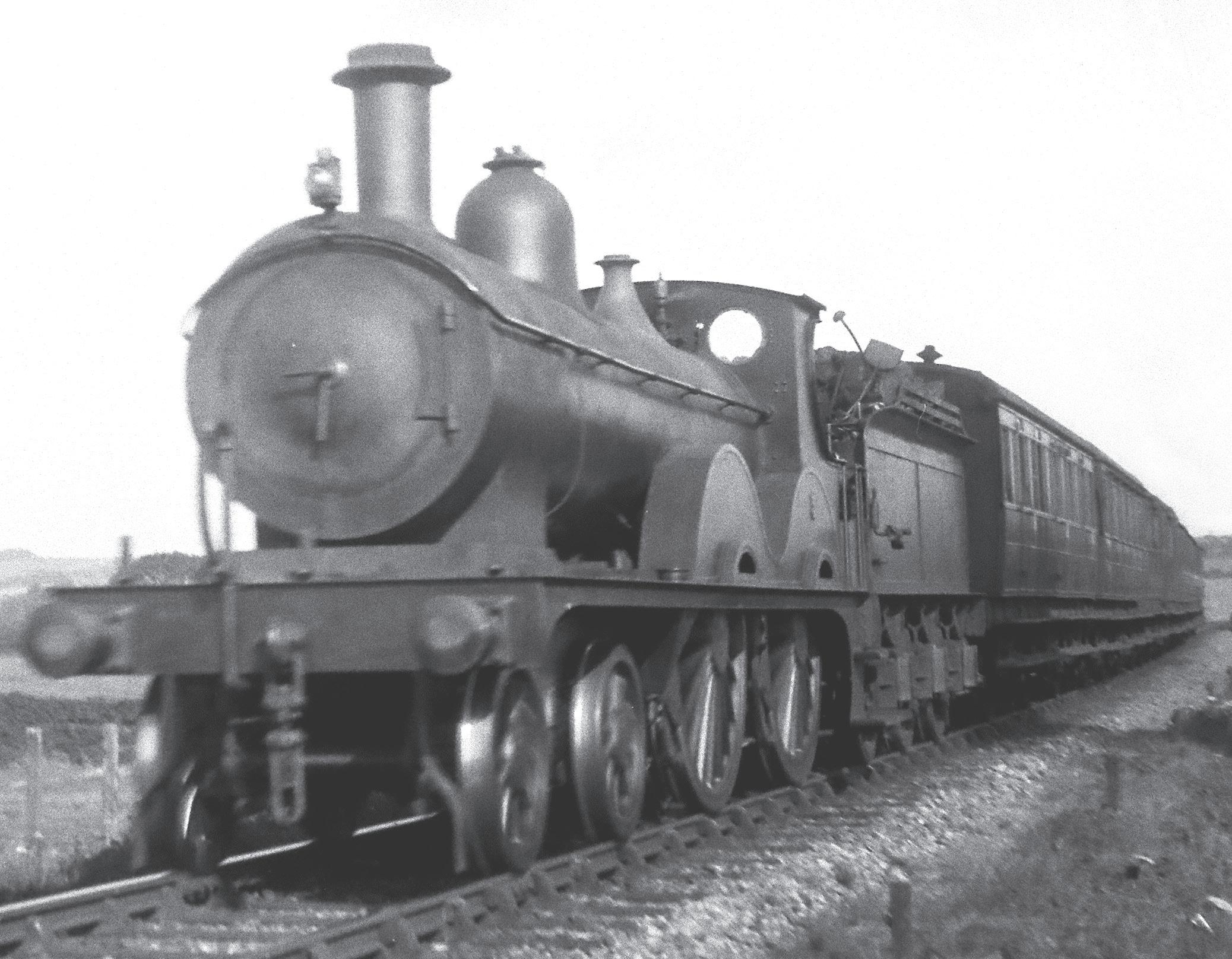

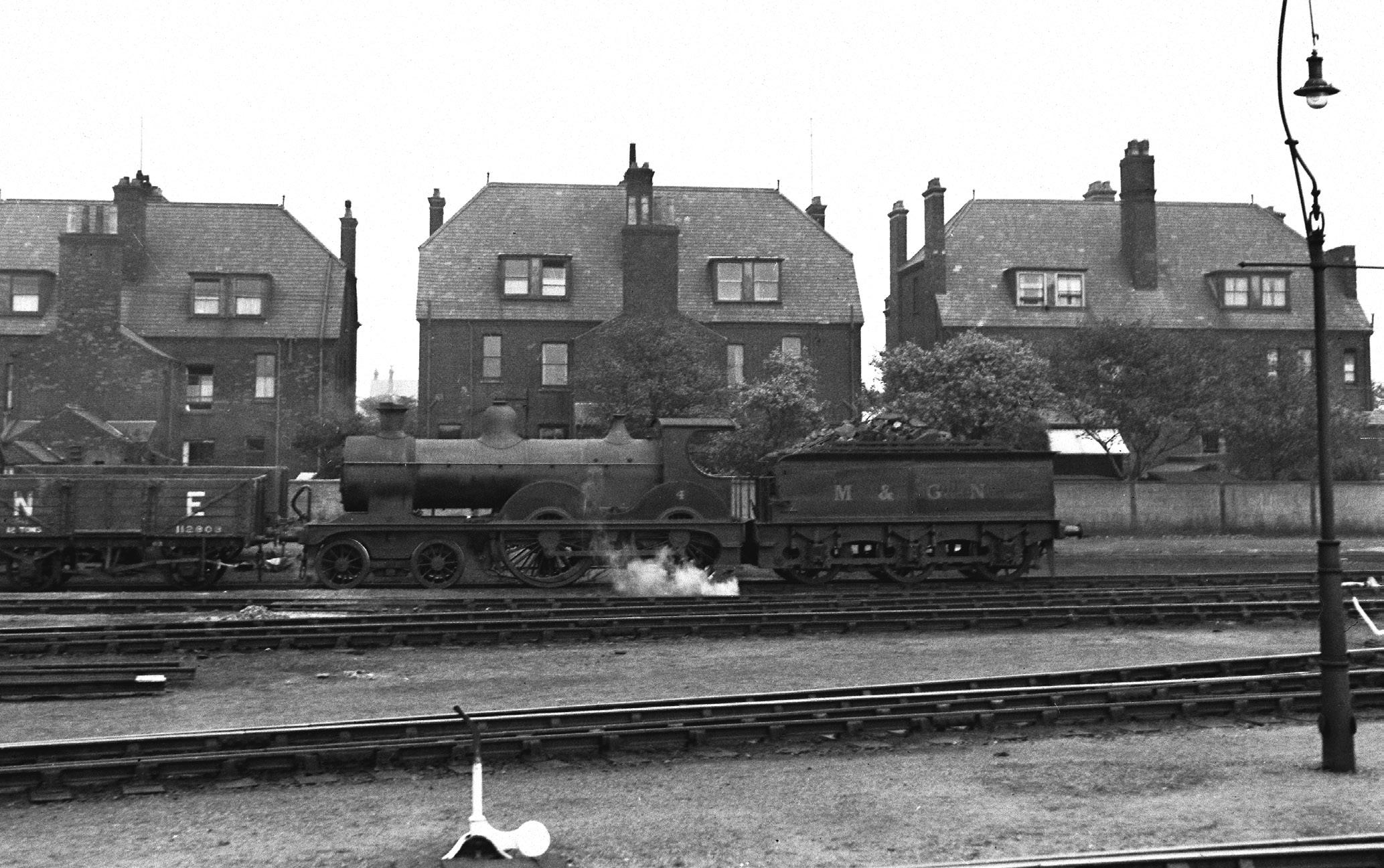
Around the Midland & Great Northern Joint Railway

The Peterborough-bound platform at Wisbech St Mary viewed from the west on 21st February 1959 as the train runs over the level crossing. Originally opened as a single line station with a short platform the line was doubled through Wisbech St Mary to Murrow, opening on 19th February 1901. The original platform was extended and a new Down platform added complete with a standard M&GN waiting shelter. Following closure to passenger services the goods yard remained in use until January 1965. The line officially closed from 31st October 1965. (L. R. Freeman)

The Yarmouth-bound platform at Wisbech St Mary looking east on the same date, showing the concrete name board and the waiting shelter added when the line was doubled. The signal box, protecting the crossing over Ouse Lane, was the original which was moved to accommodate the additional track having additional levers added, following closure to passenger services the line was singled in 1962 and the box reduced to gate cabin status. (L. R. Freeman)

Wisbech (spelt as Wisbeach until 1877) was the objective of several lines in the mid-19th century. The Eastern Counties Railway arrived from the south in 1847; with the East Anglian Railway from the east in 1848. By 1862 these were operated by the GER who added the Wisbech & Upwell Tramway to the network south of the town in 1894. The M&GN arrived from the west and headed north in 1866; however, there was never any connection between the companies here. From 27th September 1948 the station was renamed Wisbech North. On the date the photographer paid a visit, Ivatt Class 4MT No 43093 was engaged in shunting a parcels van at the cattle docks that entailed blocking the level crossing over Pickards Lane. The length of the station required another level crossing, over Leverington Road, between the cattle docks and goods station. No 43093 arrived at South Lynn depot in December 1950 following construction at Darlington Works. It stayed at Lynn until closure of the M&GN when it was transferred to Boston. It arrived at its last depot, at Canklow, in October 1965 from where it was withdrawn on 17th January 1965. The station site survived in private hands until 1982 when it was demolished. (R. E. Vincent)
No doubt taken shortly after the above image as the Ivatt is in the yard, Class B12 No 61547 hauls its four-coach train into the station, this may well be the 12.20pm Peterborough-South Lynn service that passed the 14.45 South-Lynn-Wisbech parcels service here. To the right of the locomotive is the water tank. Up until the 1950s the side facing the approach road was sign written with ‘M&GN Wisbech Station’, leaving the prospective passenger with no doubt as to where they were. The level gauge can be seen above the left hand poster board. Operated by a simple float and chain this enabled the station staff to see how full the tank was – the nearer the bottom the fuller the tank. The locomotive was constructed by William Beardmore, of Dalmuir, Glasgow, entering traffic in September 1920. Originally numbered 1547, it was renumbered 8547 in January 1924 before regaining its original number in September 1946. At Nationalisation it was allocated to Stratford, it was transferred to South Lynn in December 1948 with a final move to Norwich Thorpe in September 1954 from where it was withdrawn on 24th November 1958. The crew of No 43093 are taking a break on the platform – note the white washed edge to the platform, dating from the World War 2 era, when night time black outs had to be observed. (R. E. Vincent)
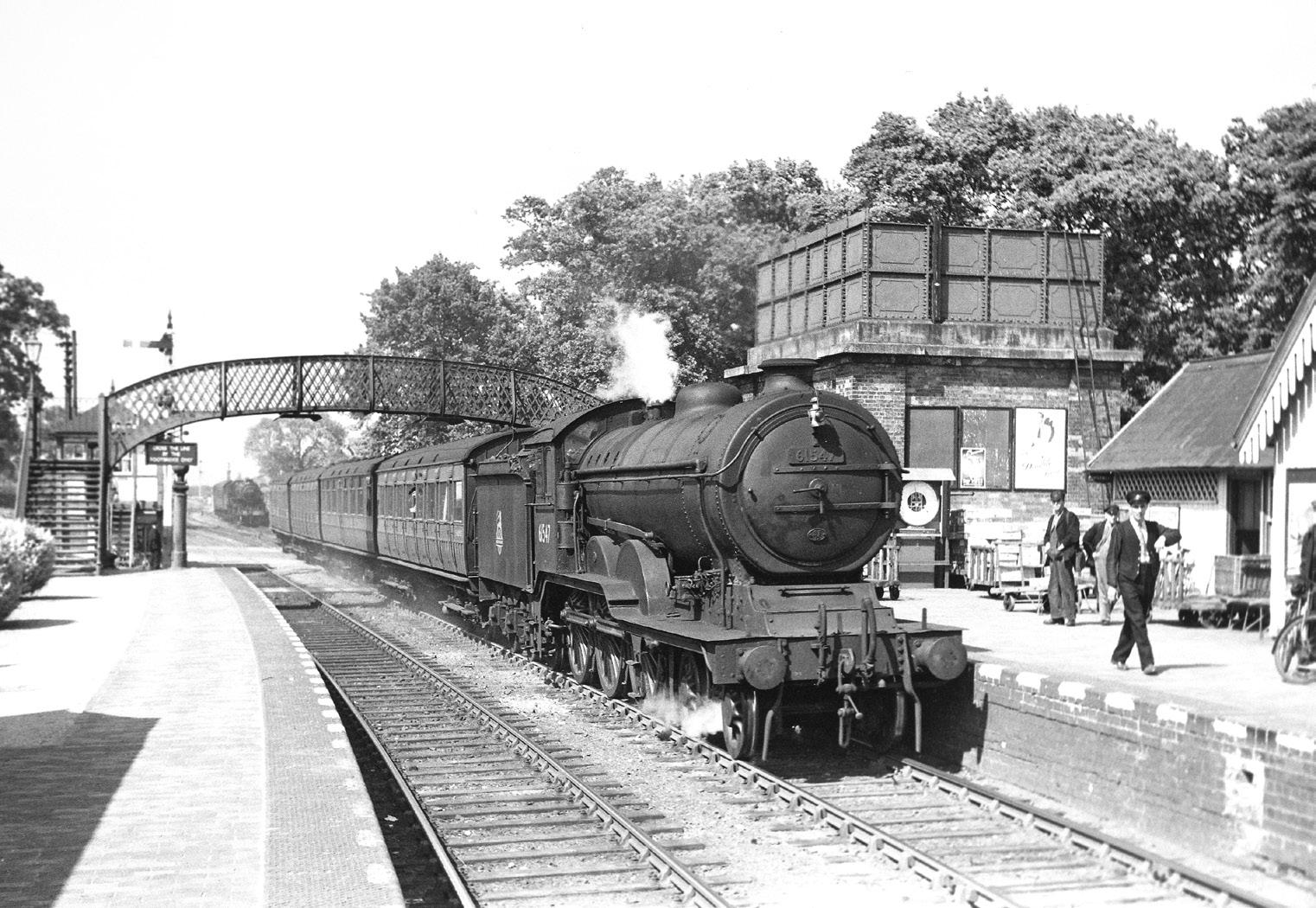
Around the Midland & Great Northern Joint Railway
Melton Constable to Yarmouth Beach
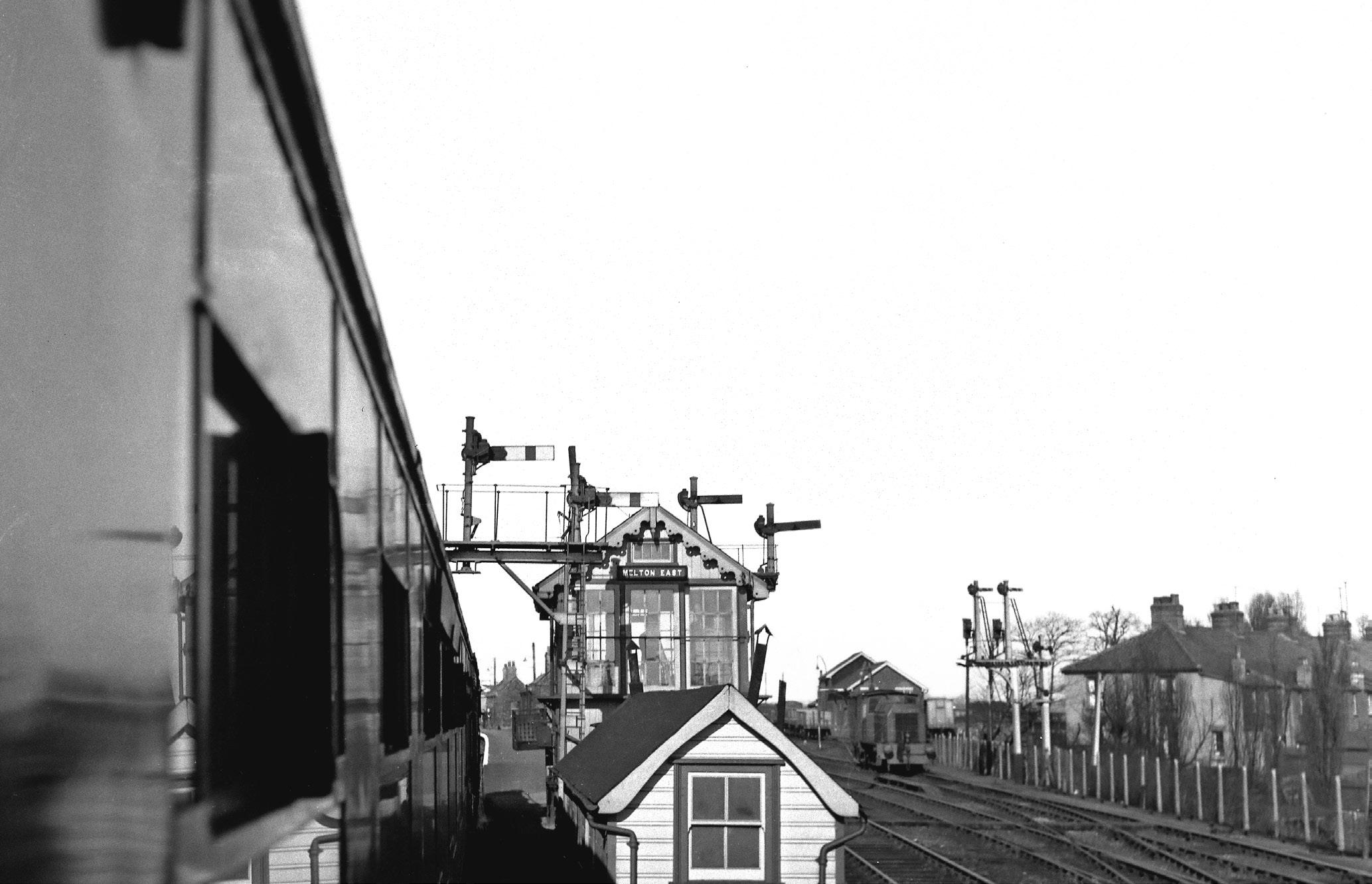
Above. We now return to Melton Constable to complete the journey to the east coast of Norfolk. A service from
Beach arrives
Melton Constable on 28th February 1959, passing Melton East box as it does so. A member of the ‘new order’ in the shape of a Hunslet 0-6-0 diesel-mechanical shunter – later Class 05 – stands at the entrance to the goods yard. The East box controlled arrivals from the Yarmouth and Norwich lines. Following of the closure of the Lynn and Yarmouth lines on 2nd March 1959, the Sheringham line remained open for all traffic with the Norwich line retained for goods traffic. West box was closed on 1st January 1960 after which all operation was concentrated on the East box until it too closed on 6th April 1964. (A. E. Bennett)
Top right. The twin villages of Corpusty and Saxthorpe face each other across the River Bure. Opening on 5th April 1883 the station was originally a passing point with a 300yd loop, the line being doubled from Melton East on 20th May 1901. The Up (Peterborough) platform is seen, looking west, from a departing service on 21st February 1959. Concrete name-boards were supplied during 1925 – and seemingly the end must be nigh as the name has been removed – however, they been rendered blank during World War 2; a smaller board to its left now carrying the station name. As in so many images the ‘Gentlemen’ sign is the most obvious. The station yard served as a concentration point for construction materials early in World War 2 for Matlaske (opened October 1940) and Oulton (opened 31st July 1940) airfields. (L. R. Freeman)
Bottom right. The Yarmouth platform, looking west, on the same date, with a number of passengers on the platform – they could of course be taking a final ride before closure the following weekend. The signal box dates from the opening of the line, although it was given a new frame when the line was doubled. Following closure the station was acquired by Norfolk County Council for conversion to a youth service centre. (L. R. Freeman)
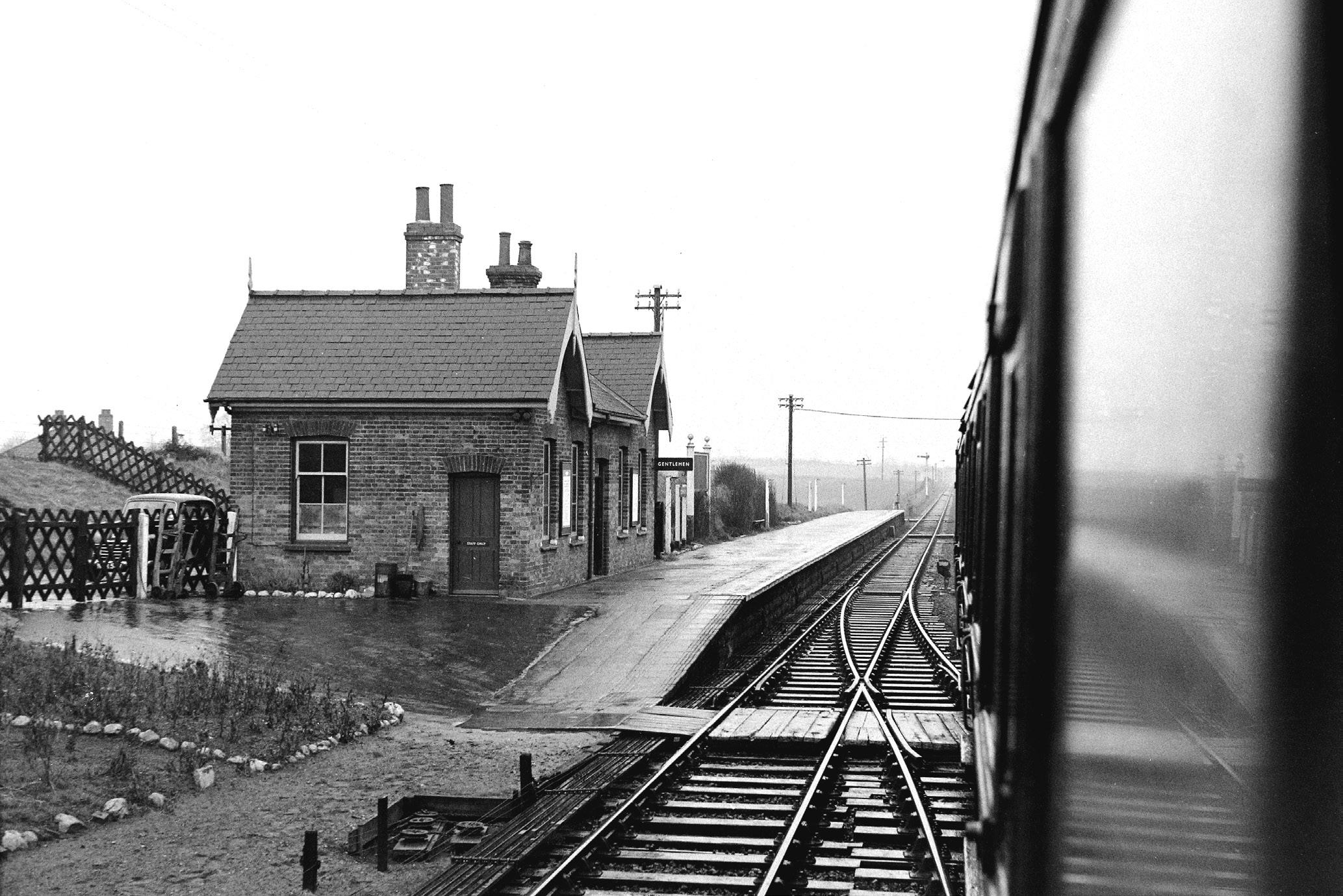
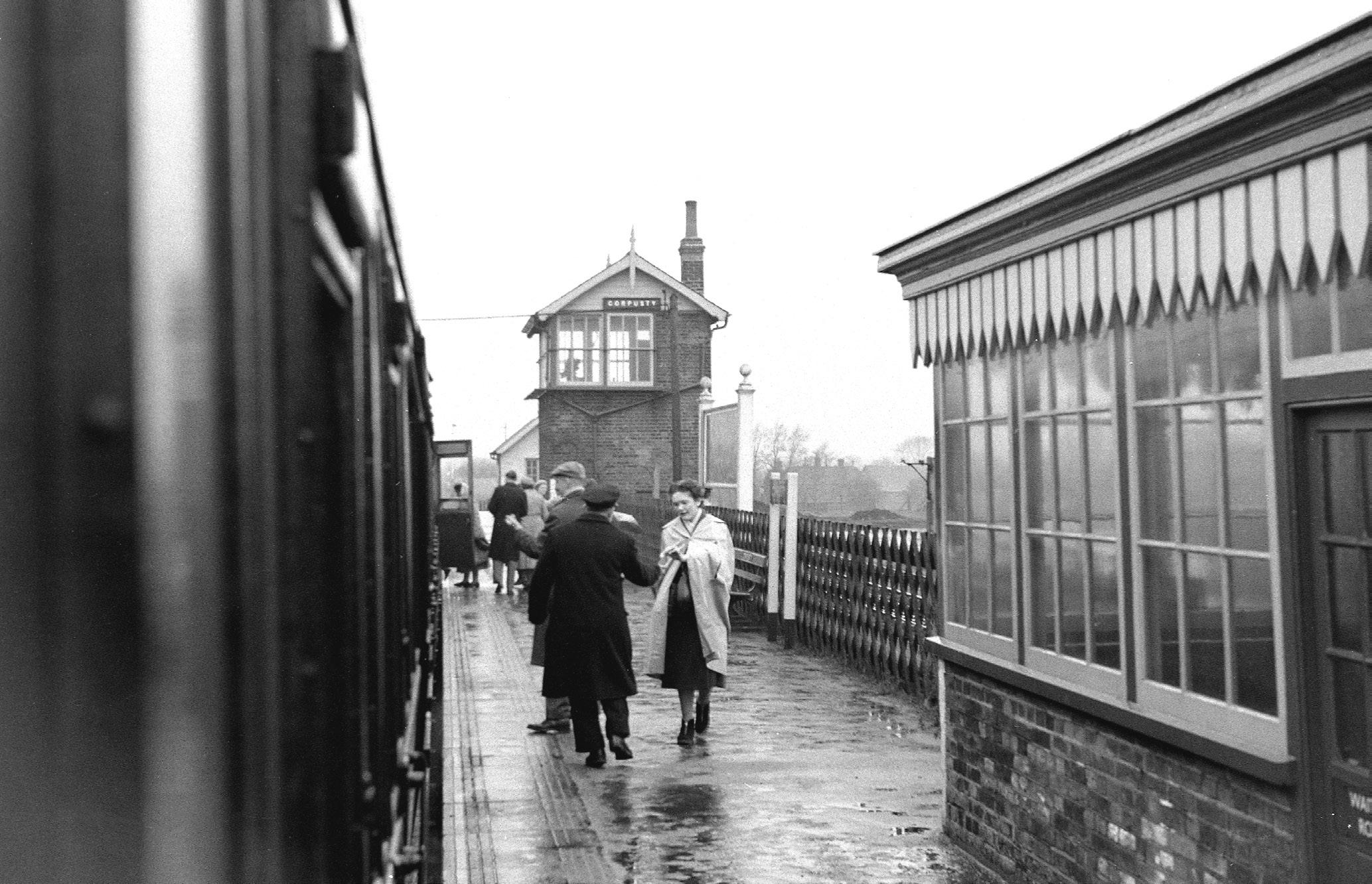
Around the Midland & Great Northern Joint Railway

Lenwade, seen on the 8th October 1960, retains most of its former glory. The station, opened on 1st July 1882 consisted of a single platform with no passing loop and a small goods yard – trains could however cross by using a refuge siding, although as this necessitated reversing it was limited to passenger services crossing a freight service as railway regulations forbade the reversing of passenger trains when occupied. The signal box, controlling the level crossing over Porter’s Lane, dates from around 1915, replacing the original one on the platform, and survived until closure in December 1973 – being demolished the following year – with the line from Wroxham now being worked as a long siding. The station building and goods shed survive in private hands. Interestingly there was once a plan to build a line from here to East Dereham, but Parliamentary approval was not granted. (L. R. Freeman)
Although the M&GN was heading towards closure, by the Eastern Region, traffic was greatly improved by the establishment of a private siding at Lenwade for Anglian Building Products in September 1957 – amongst its output were concrete beams for motorway bridges. An additional siding was laid in 1964 for Taylor Woodrow-Anglian –another manufacturer of concrete beams. A third was added in 1967 for Boulton & Paul, although the Taylor Woodrow agreement was terminated in 1970. The beams could weigh as much as 80 tons and be 100ft in length – not only requiring special wagons but operating arrangements as well. In this case beam’s transport involved the use of, working from the left, a four-wheel bogie, three four-wheel flat wagons followed by another a four-wheel bogie. The second beam is supported by a two six-wheel bogies flat wagon, a bogie bolster wagon and another two six-wheel bogie flat. All vehicles were close-coupled to ensure continuity of the draw gear (readers wanting more details are referred to A Life with Locomotives D. W. Harvey, Marwood Publishing, 1992). The last train for Anglian Building Products ran on 28th January 1982 with official closure taking effect on 15th June 1983. The track bed now forms part of the Marriott’s Way, with some remains of the concrete operations being visible from the A1067 Norwich Road – Breedon Lenwade Concrete products operate from the site. (Ian C. Allen)
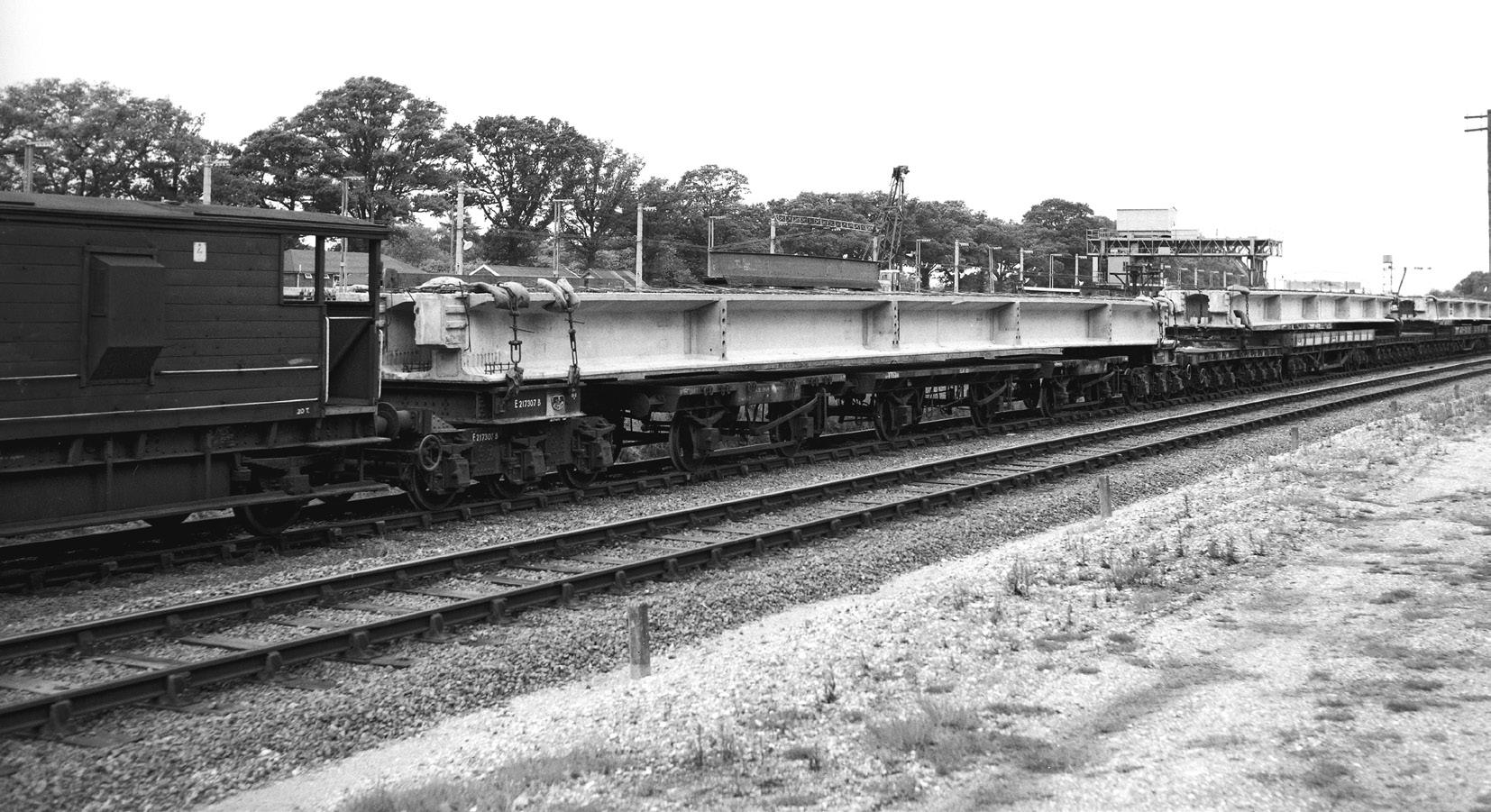
Around the Midland & Great Northern Joint Railway
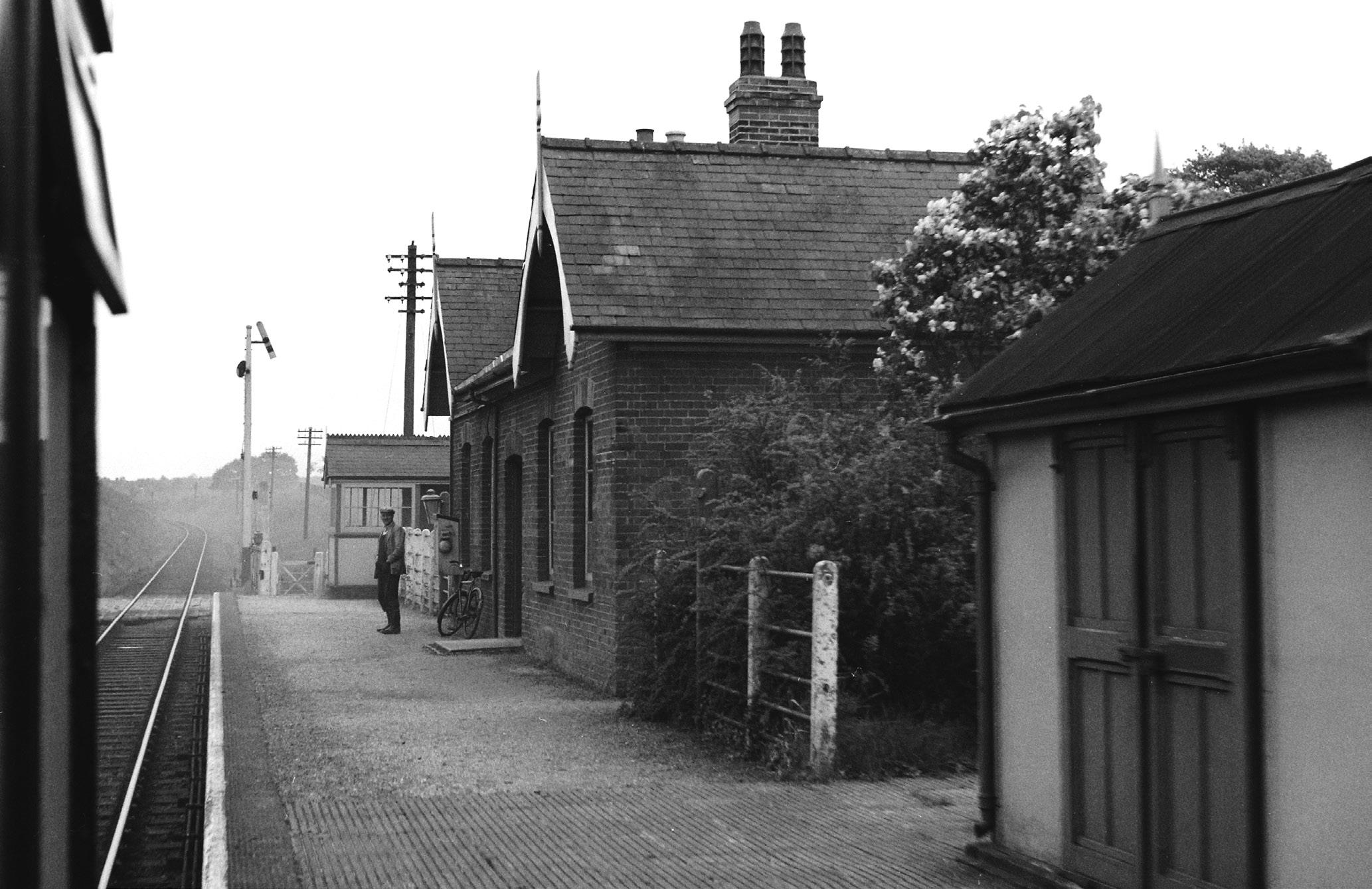
Attlebridge, looking towards Norwich from the rear coach of the 12th May 1960 special. The standard wooden Tariff shed can be seen with what appears to be wooden slates on the platform to make the use of wheeled trolleys easier on the gravel. The small gate cabin dates from the early years of the 20th century when it replaced the original platform box. The small goods yard, two sidings and a head shunt sufficed for all of the stations life, although it must have been a busy place during World War 2 when the loading dock was used for supplies of armaments to the nearby airfield. RAF Attlebridge opened as a grass field – being a satellite for Swanton Morley – in June 1941; the laying of runways complete with hard standing rapidly followed elevating it to full station status being operated by the United States Army Air Force, as Station 120, from March 1944. The final 466th Bomber Group operation from Attlebridge took place on 25th April 1945 with the Americans beginning to vacate the station in July. The airfield was transferred to RAF Maintenance Command on 15th July 1945 and finally disposed of on 15th March 1959 – the runways and taxiways remain today, albeit occupied by various buildings together with part of the site being occupied by solar panels and a couple of wind turbines.
(L. R. Freeman)A view looking the other way at Attlebridge, although the goods yard remained operational following closure to passenger services it appears to be well covered by weeds when this photograph was taken. Closure of the yard took place on 13th July 1964 with the access points, and signalling, being removed the following year. The ground frame remained operational until final closure on 11th July 1968, the gates, protecting Station Road, being operated by the train crew until the final trains ran in the early 1970s. The station building still stands, albeit much altered.
(Ian C. Allen)
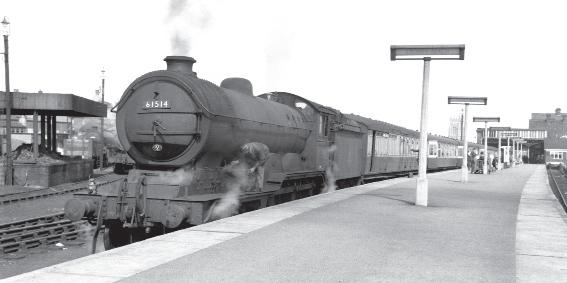
The Midland & Great Northern Joint Railway was jointly owned by the Midland Railway and the Great Northern Railway; those companies had long sponsored and operated the predecessor companies. It had the longest mileage of any joint railway in Great Britain. Formally opened in 1893, with the creation of the Joint Committee, it provided a link between the Midlands and East Coast fishing port of Yarmouth – traversing the popular ‘Broadland’ and ‘Poppyland’ areas of Norfolk. It was not until 1936 – well into the Grouping era – that its operation was taken over by the London & North Eastern Railway, retaining much of its independent character in later years. The area directly served was agricultural and sparsely populated, but seaside holidays had developed and many long-distance express trains used the M&GN from the territory of the parent companies, to the east coast. After 1945 the profitability of the network declined steeply, worsened by the seasonality of the business. Increasing competition by road transport along with BR operating losses caused the lines closure in 1959.

ISBN 978-1-913251-63-5

Price:-
£14.95

